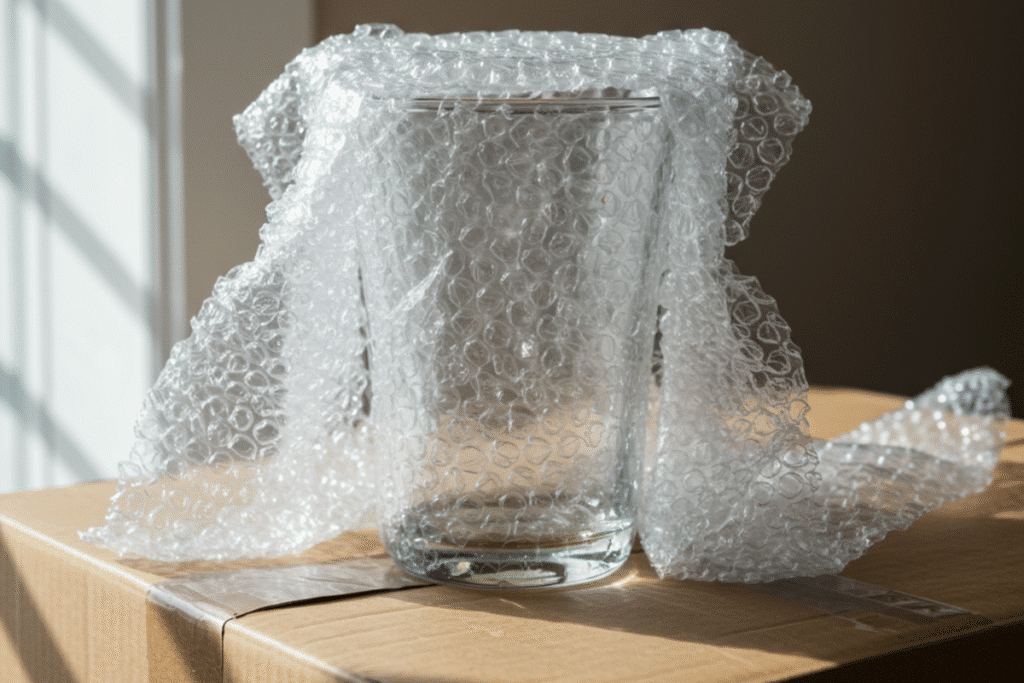Why Safe Handling of Delicate Items Matters During Your Move
Moving can be a daunting task, especially when it comes to transporting fragile and delicate items. Whether it’s cherished family heirlooms, valuable artwork, or sensitive electronics, these possessions often carry both emotional and financial significance. The unique vulnerabilities of such items mean that a single misstep during packing, loading, or transit can result in irreparable damage or costly repairs. Beyond the monetary loss, the sentimental value of irreplaceable belongings can make any breakage feel even more impactful.
Ensuring the safe handling of delicate items provides more than just physical protection—it also brings peace of mind throughout your moving journey. When you know your valuables are secure, you can focus on other aspects of your move without constant worry. Moreover, damaged or broken items can disrupt your moving schedule, leading to additional stress, delays, and unexpected expenses.
Accidents involving fragile goods can also pose safety risks. Broken glassware or ceramics can cause injuries during unpacking, turning a simple move into a hazardous ordeal. By prioritizing the careful handling of these items, you not only safeguard your possessions but also create a safer environment for everyone involved in your relocation. In short, a thoughtful, well-planned approach to moving delicate items is a crucial step toward a stress-free and successful move.
Assessing Fragility: Understanding Your Items’ Unique Needs
Every fragile item is unique, and understanding their specific vulnerabilities is the foundation of safe moving. Start by carefully examining each belonging you plan to transport. Consider the materials they’re made from—glass, porcelain, wood, or metal. The age and condition of an item can also play a significant role; older or well-used items may have weakened joints or hairline cracks that make them more susceptible to damage.
Certain categories demand extra attention. Glassware, fine china, antique figurines, and delicate electronics are all prone to breakage or malfunction if handled improperly. Before you begin packing, inspect each item for existing flaws such as chips or cracks. Addressing these weaknesses helps you determine how much padding and protection is necessary.
Not all fragile items are straightforward to pack. Heavy or unusually shaped pieces—like sculptures or large mirrors—often require custom packing solutions or partial dismantling. For example, removing legs from a fragile table or detaching parts from a lamp reduces the risk of stress during transit.
Finally, decide how each item should be transported. Particularly valuable or sentimental small items might be best carried with you personally, while larger, bulkier pieces may need special handling or additional support in the moving vehicle. Taking the time to assess each item’s fragility will guide your packing, handling, and transport decisions, ensuring everything arrives safely at your new home.
Choosing the Right Packing Materials for Maximum Protection
Proper packing materials are your first line of defense against breakage during a move. Investing in sturdy, high-quality supplies not only protects your delicate items but also saves you from potential heartache and expense down the line. Start with bubble wrap and packing paper—these materials cushion shocks, absorb vibrations, and provide a protective barrier around fragile surfaces. Wrap each item individually, ensuring that all corners and edges are carefully covered.
For boxes, opt for double-walled cardboard. These offer superior strength compared to standard single-walled varieties, reducing the risk of boxes collapsing under weight or during stacking in the moving truck. When placing items inside, use packing peanuts or foam inserts to fill any empty spaces. This prevents items from shifting or bumping into each other during transit, which is a common cause of damage.
It’s important to avoid using newspaper as a wrapping material, as the ink can transfer and stain your possessions, especially fine china or fabrics. Instead, use clean packing paper or tissue paper for a safe and effective wrap. Remember to wrap each item separately, even if they’re part of a set—stacking unwrapped items together increases the risk of scratches or breakage.
Taking these precautions with your packing materials can make a world of difference, ensuring your fragile belongings are cushioned, secure, and ready for a safe journey to your new location.
Labeling and Securing Fragile Boxes for a Smooth Move
Once your fragile items are packed, proper labeling and securing of boxes are essential steps in safeguarding them during the move. Use a thick, bold marker to label each box containing delicate items as “fragile.” Make sure the label is visible on at least two sides of the box, so it’s unmistakable from any angle. Be specific whenever possible—labels like “fragile—glassware” or “fragile—electronics” help movers or helpers identify the nature of the contents and handle them accordingly.
Color-coding your labels can further improve organization and efficiency. Assign a different color for each room or item type, making it easier to direct boxes to the correct location in your new home and streamline the unpacking process. This simple step can save significant time and reduce confusion on moving day.
Don’t forget to include clear handling instructions such as “this side up” or “handle with care.” These cues alert anyone lifting or stacking boxes to take extra precautions, minimizing the risk of careless handling. Once labeled, secure your boxes with quality packing tape, reinforcing all seams and corners for added strength.
Taking time to label and secure your boxes not only protects your fragile belongings but also makes the entire move more organized and less stressful. When everyone involved knows what’s inside and how to handle it, your delicate items are far more likely to arrive safely at your new destination.
Smart Loading Strategies to Prevent Damage
How you load your moving vehicle is just as important as how you pack your boxes. Start by lifting boxes from the bottom, keeping them upright and balanced to avoid sudden shifts that could damage the contents. Always place heavier boxes on the floor of the vehicle, with lighter, more fragile boxes stacked on top. This not only prevents crushing but also makes it easier to access the most delicate items without disturbing the rest of the load.
Arrange boxes tightly together to minimize empty spaces that could allow items to slide or tip over during transit. If you notice gaps between boxes or furniture, fill them with soft materials such as blankets, towels, or even pillows. These act as shock absorbers, providing an extra layer of protection against sudden stops or bumps in the road.
Once your boxes are in place, use straps or bungee cords to anchor them securely. This prevents shifting, which is one of the leading causes of breakage during a move. For especially fragile items, consider placing them in the center of the vehicle, surrounded by other boxes and cushioned on all sides. This position offers the most stability and minimizes the risk of damage from external impacts.
Before closing up the vehicle, double-check that everything is stable and unlikely to move. Thoughtful loading strategies like these significantly reduce the risk of accidents, ensuring your most delicate possessions arrive in perfect condition.
Protecting Temperature-Sensitive Belongings in Transit
Not all fragile items are only at risk from bumps and jolts—some are sensitive to temperature fluctuations during a move. Electronics, artwork, musical instruments, leather goods, and certain antiques can be irreparably harmed by exposure to extreme heat or cold. Before your move, identify which belongings require special climate considerations.
To protect these temperature-sensitive items, use insulated packing materials such as thermal blankets, foam, and extra layers of bubble wrap. These materials help maintain a more stable environment around your items, shielding them from sudden temperature changes. For high-value or especially delicate pieces, consider using coolers or specialized thermal containers.
If you’re moving during a particularly hot or cold season, or if your journey will be lengthy, look into climate-controlled transport options. Many moving vehicles offer this feature, ensuring that your valuable items are kept within a safe temperature range throughout the trip.
By taking these extra steps, you can prevent common problems like warping, cracking, or malfunctioning of sensitive belongings. Temperature control might seem like a small detail, but it can make a world of difference in preserving the condition of your most prized possessions during your move.
When to Consider Professional Packing and Unpacking Help
While many people handle their own moves, there are times when seeking professional packing and unpacking help is the wisest choice—especially when it comes to delicate or high-value items. Professional packers are trained to assess the unique needs of each item, using specialized materials and techniques to ensure maximum protection.
Their experience means they know exactly how to wrap, cushion, and secure even the most awkwardly shaped or fragile items. They’re skilled in efficient loading and unloading, minimizing the risk of accidents or mishandling. Many professional services also provide insurance coverage for your belongings, giving you an added layer of security and peace of mind.
Hiring professionals can be a game-changer for anyone feeling overwhelmed by the prospect of packing or worried about the safety of their valued possessions. With experts managing the most challenging aspects of your move, you’re free to focus on logistics, paperwork, or simply enjoying the transition to your new home.
Ultimately, professional help is an investment in both the safety of your belongings and your own peace of mind. If you have valuable, sentimental, or especially delicate items, enlisting the support of experienced movers can make your relocation truly stress-free.
Common Questions About Moving Fragile Items—Answered
How can I minimize pet stress while moving fragile items?
Maintaining your pet’s routine is key—feed and walk them at usual times, and create a quiet, familiar space away from the chaos of packing. Use calming aids if necessary, and pack your pet’s essentials (food, toys, bedding) separately for easy access.
What should I do if something fragile breaks during the move?
First, carefully collect and secure all pieces to prevent injury. Document the damage with photos, and review your insurance or moving agreement to determine if coverage applies. For valuable or sentimental items, consider professional repair services.
Are there insurance options for fragile belongings?
Yes, most moving companies offer basic insurance, but it may not cover the full value of delicate items. Consider purchasing additional third-party coverage for high-value possessions, and always document your items before the move to make claims easier.
What are some tips for packing and unpacking fragile items safely?
Wrap each item individually with bubble wrap or packing paper, fill all gaps in boxes with padding, and label boxes clearly. When unpacking, do so one item at a time, checking for damage as you go.
Should I transport especially fragile items myself?
If an item is particularly valuable or irreplaceable, or if you’re concerned about its safety, it’s often best to transport it personally. This way, you have direct control over its handling and can ensure it receives the attention it deserves.
By anticipating these common scenarios, you can approach your move with confidence, knowing your delicate belongings are well protected every step of the way.





